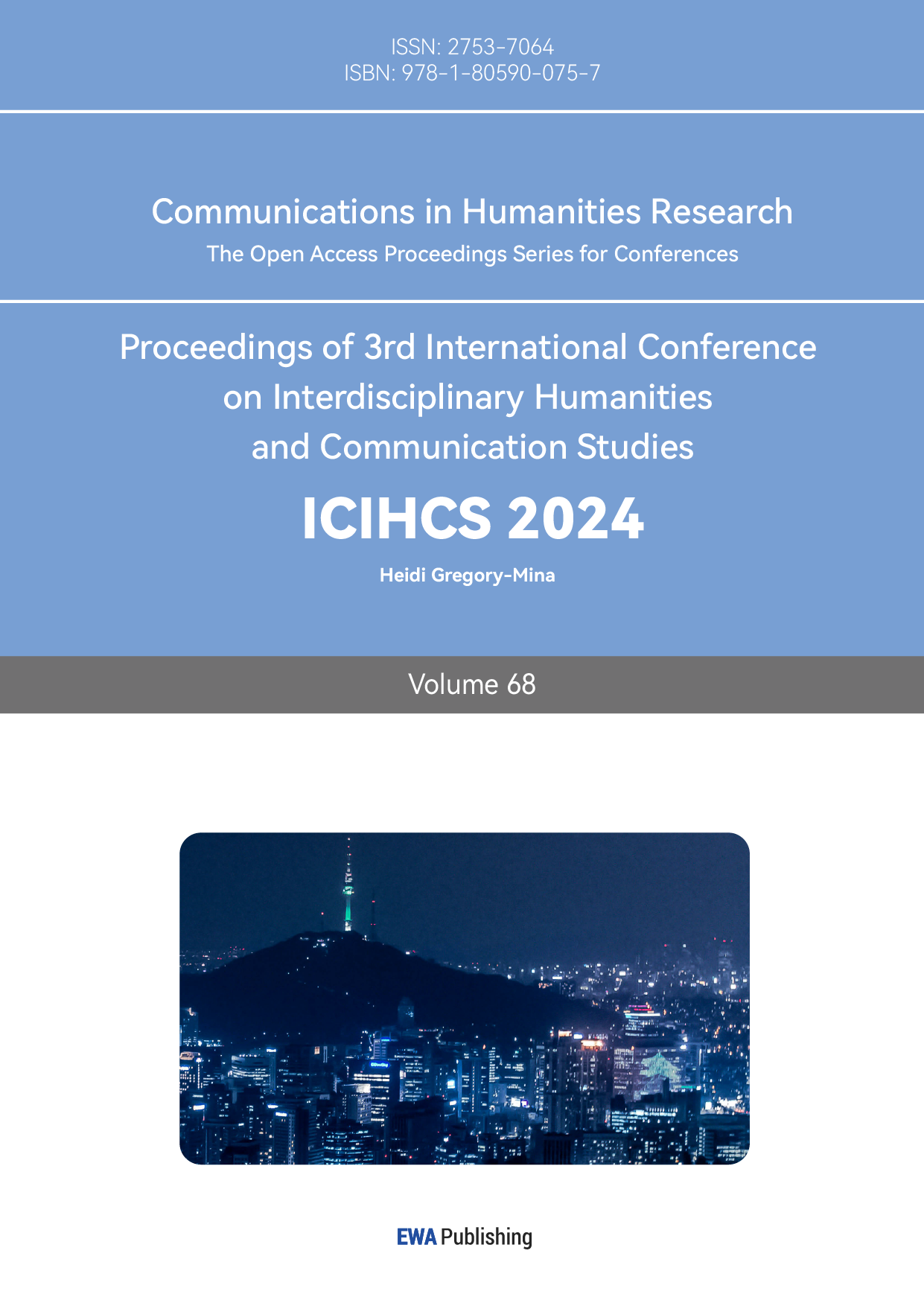1. Introduction
With economic development, China has become a new international Migration destination. According to the Seventh National Population Census, by November 2020, approximately 846,000 foreigners were residing in mainland China and registered in the census [1]. Nevertheless, due to the emergence of the COVID-19 pandemic and its subsequent global spread, China implemented strict management measures for incoming and outgoing travellers, leading to a halt in international mobility. At the same time, The COVID-19 pandemic triggered xenophobia and discrimination towards individuals of Asian and Chinese backgrounds, along with an escalation of negative discourse directed towards China, particularly on social media platforms [2-4]. The WHO declared the end of the COVID-19 pandemic on 5 May 2023 [5]. Meanwhile, the Chinese government has determined to reactivate visas issued before the COVID-19 pandemic, which are still valid on March 15. Additionally, the process of reviewing and approving tourist visas, as well as other types of visas, will be restarted, and visa-free entry for multiple locations will be reinstated [6]. This is also the first time since the outbreak of the COVID-19 pandemic that China has reopened its borders to foreign tourists after three years. As of 17th Nov 2023, foreign nationals of 54 countries are eligible for a 72/144-hour visa-free transit policy holding interline tickets to transit to a third country or region via ports and cities in the Chinese mainland [7]. Due to the 72/144-hour Visa-Free Transit Policy, the number of foreigners entering the Chinese mainland without a visa has surged. In the first quarter of 2024, the number of visa-free entries reached 1.988 million, an increase of 266.1% year-on-year [8]. Meanwhile, during the first quarter of 2024, around 2,420 YouTube and TikTok videos featured keywords such as "China," "trip," and "travel" in the titles, which is five times more than the same period of 2023, according to data from the statistics platform Meltwater [9].
Consequently, it is believed that with the recovery and increase of international mobility, xenophobia and prejudice against Chinese people and negative attitudes towards China on social media will improve. Therefore, this study aims to explore the changes in public attitudes towards China before and after the implementation of visa-free policies following the end of the COVID-19 pandemic.
2. Literature review
The theoretical foundation underlies this study is the intergroup contact theory based on the contact hypothesis. The intergroup contact theory posits that contact between different group members can reduce prejudice and intergroup conflict [10]. According to Williams, interpersonal cooperation based on goal interdependence is a valuable tactic to lessen intergroup animosity. However, he did not address which type of contact can reduce prejudice [11]. On this basis, Allport proposed four conditions that positive effects of intergroup contact occurred: equal status, common goals, intergroup cooperation, and support of authorities, law or customs [12]. Therefore, Allport is also considered the founder of the contact hypothesis. However, Allport did not specify which of the four conditions are necessary and which are facilitating conditions [10]. Moreover, a series of studies have shown that even without Allport's four conditions, intergroup contact can still reduce prejudice between different groups [10,13,14].
In addition, one of the most significant advances in intergroup contact research is indirect intergroup contact strategies, which can serve as an effective means of improving relations between social groups [15]. Considering the relatively small foreign population compared to the global population, many people perceive foreigners through indirect experiences via media rather than direct contact. With the development of the Internet, E-contact, as a part of indirect intergroup contact, is playing an increasingly important role [16,17].
Similar to the E-contact theory in indirect intergroup contact, Media Influence is the second theoretical support in this article. The major effects that media have on people's perceptions of certain events include the agenda-setting effect and the cultivation effect [18]. Additionally, compared to the centralized dissemination method of mass media, where information flows from a few (such as news organizations) to the masses, the development of the internet and the rise of social media have ushered media Influence into a new environment phase. Social media, compared to mass media, features a more decentralized and interactive mode of communication. In other words, the large-scale collection of social media data provides an alternative method of comprehending public opinion through the expressive utilization of social media, which offers a platform for individuals to express themselves [19]. This is especially important when researching prejudice and xenophobia because online anonymity allows individuals to feel less restrained and more comfortable sharing their inner thoughts and desires [20,21].
Social media has been utilized in Xenophobia and Prejudice. For instance, Ahmed et al. used computational text analysis on comments from Singaporean Facebook pages and forums [19]. Their findings revealed that discussions pertaining to immigrants on social media frequently encompassed negative emotions and apprehensions regarding financial impact. For another example, Lu and Sheng, through analyzing Google searches, Twitter posts, and the timing of the first COVID-19 diagnoses in various regions of the US, found that the first local case led to an instant escalation in local anti-Asian animus [4]. Preconceived notions about minority groups and social media networks contributed to the formation and spread of racial hatred amid the crisis. Additionally, racial animus triggered by the pandemic may endure beyond the duration of the pandemic since the majority of racist tweets did not directly reference the virus.
Although existing research has explored how social media exacerbated prejudice and xenophobia towards China during the COVID-19 pandemic from various angles, there is a gap in understanding how public attitudes towards China have changed after the pandemic, especially considering the implementation of China's Visa-Free Transit Policy. In this case, this study is from the perspective of indirect intergroup contact in a one-year time frame to fill in the gap.
The rationale for specifically choosing YouTube to research is YouTube's popularity in English-speaking nations, as well as its text-based character. Especially the multiple uses of YouTube, along with its international and inter-generational audiences, make it a potentially invaluable resource of information regarding the viewing behaviour of videos, the themes depicted in the videos and the reasons behind viewers' choices and gratifications [22]. In this case, this research will study the main themes and related sentiments in comments about #China vlog and #China travel on YouTube. Therefore, the study's research questions (RQs) are as follows:
RQ1: What are the primary topics and sentiments of comments covered in the #China vlog and #China travel on YouTube after the pandemic and before the implementation of the visa-free policy?
RQ2: What are the main topics and sentiments of comments about the #China vlog and #China travel on YouTube after implementing the visa-free policy?
RQ3: According to the indirect intergroup contact theory, has there been an improvement in people’s attitudes towards China?
3. Method
3.1. Collection method
For data collection, R is used to access a large volume of data from the #China vlog and #China travel hashtags. These hashtags are chosen because the related videos are firsthand experiences and impressions recorded by foreigners after visiting China. Analyzing the comments on these videos aligns with the indirect intergroup contact theory.
Next, English-language videos posted by foreigners from different countries were selected. First, videos ranked in the top five by view count published between May 5, 2023, and November 17, 2023, were screened, resulting in 12,034 comments. Subsequently, the same process was applied to the top five videos ranked by view count published from November 17, 2023, to the present, resulting in 19,361 comments. The data was then cleaned to remove repetitive or irrelevant bot comments
3.2. Analysis method
The Machine Driven Classification of Open-ended Responses (MDCOR) method and Sentiment and Emotion Network Analysis (SENA) were used for topic modelling and sentiment and emotion distributions on the data. Both MDCOR and SENA software were developed by Manuel S. González Canché. MDCOR improves traditional topic modelling methods by utilizing four metrics to determine the optimal number of topics. A mixed-method approach is used to comprehensively comprehend the topics and four metrics to determine the optimal number of topics [23]. Moreover, MDCOR effectively classifies large volumes of qualitative data while preserving the original participants' voices, and it provides efficient and reliable results by reducing subjectivity and human errors in coding or classification [23]. In addition, SENA is based on natural language processing, which calculates interactive word frequency distributions and analyzes sentiment and emotion across documents. Network interactive visualizations depict these relationships and highlight central players for further qualitative analysis.
Initially, the MDCOR software processes the data and starts the task of text cleaning. The frequency of comments is counted and the 20 most frequent words are identified. According to Figure 1 and Figure 2, MDCOR dropped 1230 and 4507 responses due to the sparsity of 99%.
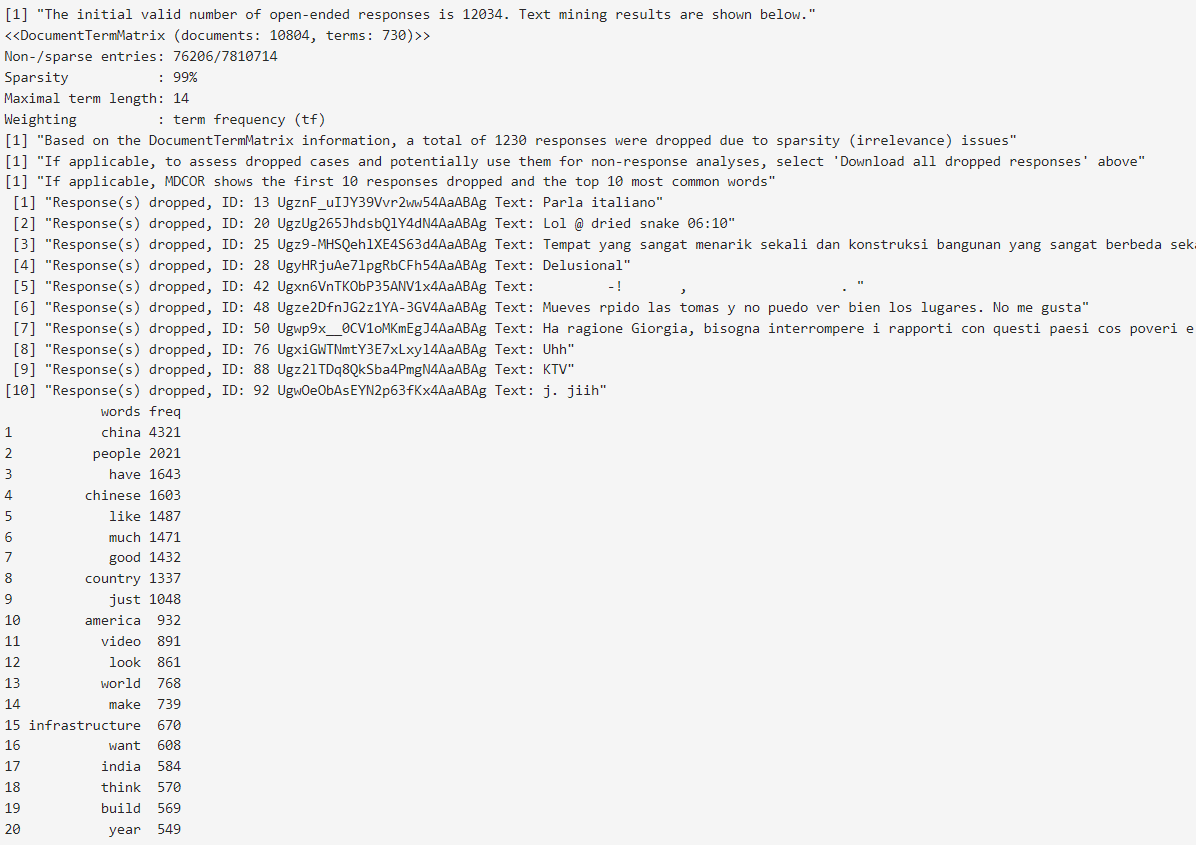
Figure 1: 20 most frequent words before the visa-free policy
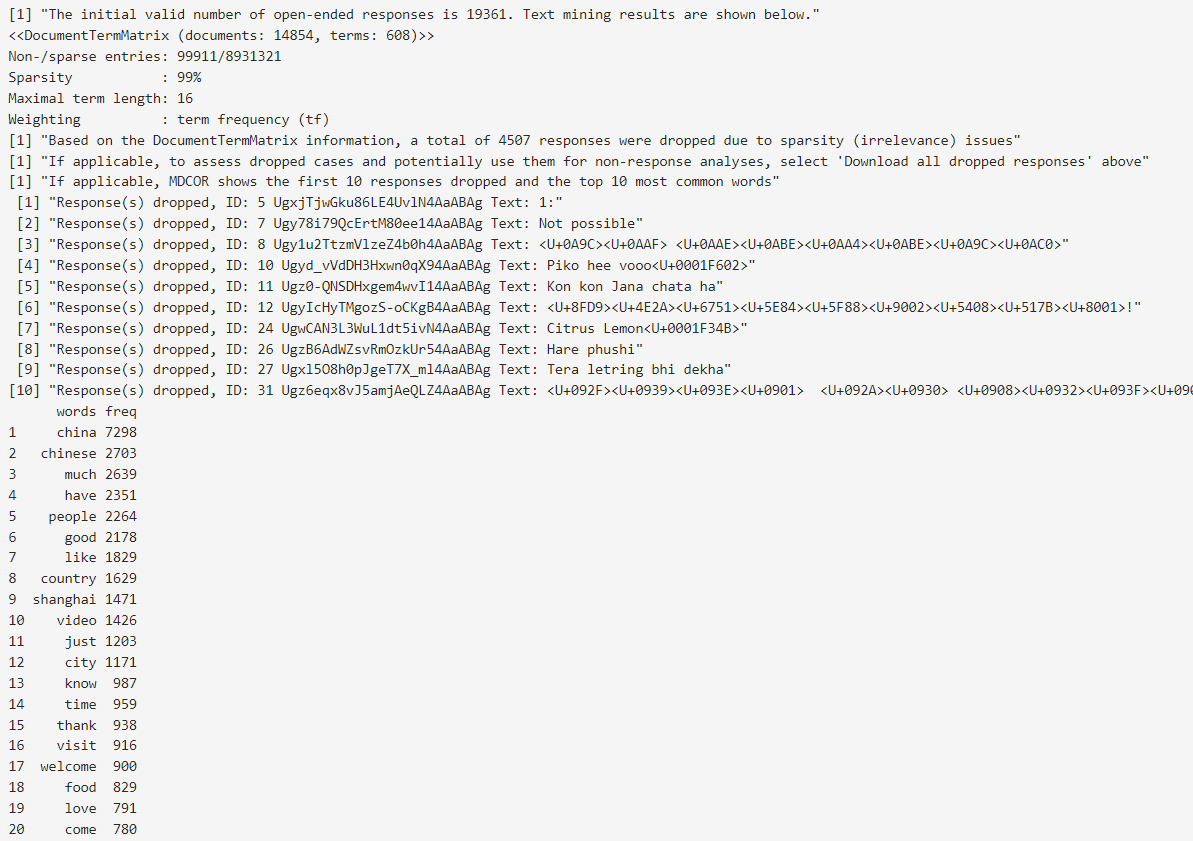
Figure 2: 20 most frequent words after the visa-free policy
Then, the next step is to remove the most common words. This paper analyses open-ended responses regarding attitudes toward #China vlogs and #China travel videos. It seems probable that the majority of participants’ responses will include “China” and ”video”, which may reduce the classificatory efficacy of this concept or phrase. Additionally, English stopwords such as "just" and other words without actual significance, like "year", etc., should also be removed. The next step is to select the machine learning sampling parameters. The default parameters are based on 500 burn-in and 5,000 posterior resamples, as well as two hyperparameters of α=50 and β=0.1, which are recommended for analyzing the ideal amount of codes [23]. Finally, 4 metrics are executed to determine the optimal number of codes. The number of topics will be selected based on the lowest value of the CaoJuan 2009 metric and the highest value of the Deveaud 2014 metric. Just as Figure 3 and Figure 4 demonstrate, the number of topics for MDCOR is 2 and 3, respectively.
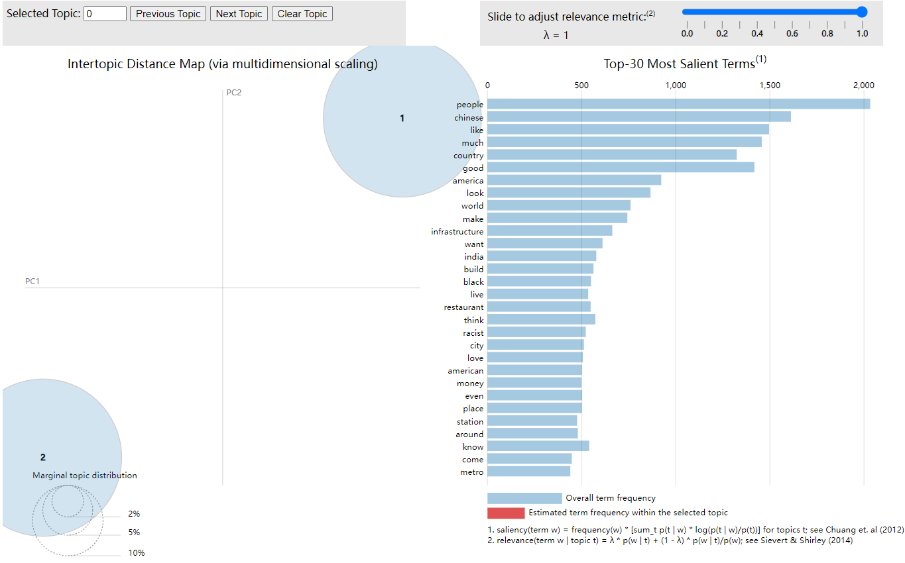
Figure 3: Topic model diagram before the visa-free policy
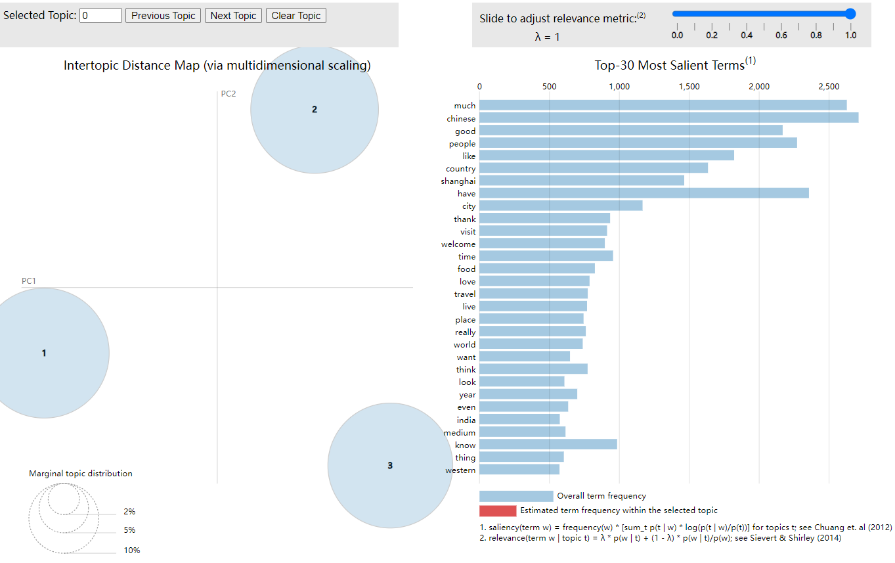
Figure 4: Topic model diagram after the visa-free policy
After obtaining the complete MDCOR data, upload it as a dataset to SENA, select the ID, Text and, Category or Time columns and proceed with text mining. Once the initial valid number of open-ended responses is obtained, continue to execute text mining procedures to produce the initial text mining output. Similar to the step of removing the common words in MDCOR software, it is also available to trim common words through SENA. Finally, execute SENA to generate the relevant word cloud and sentiment network diagram.
4. Result
The discourse emerging from the comment on May 5, 2023, to present in the #China vlog and #China travel on YouTube was analyzed using MDCOR and SENA, respectively.
4.1. Before the visa-free policies
As illustrated in Figure 3, the MDCOR indicates that the optimum number of topics is 2.
4.1.1. Topic 1: racist behaviours among Chinese
The keywords of comments in Topic 1 are “black” and “racist”, which explore whether Chinese people exhibit racism towards Black people. According to the SENA, the most common negative sentiment is "negative," with 398 instances, and the most common positive emotions are "positive" and "joy," each with 1,097 occurrences. Overall, the most positive and negative sentiment accounts for 1097/4492=24.4% and 398/4492=8.9% of the comments(Figure 5).
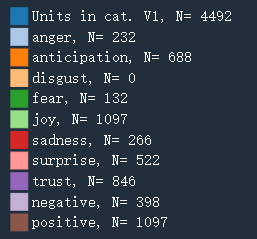
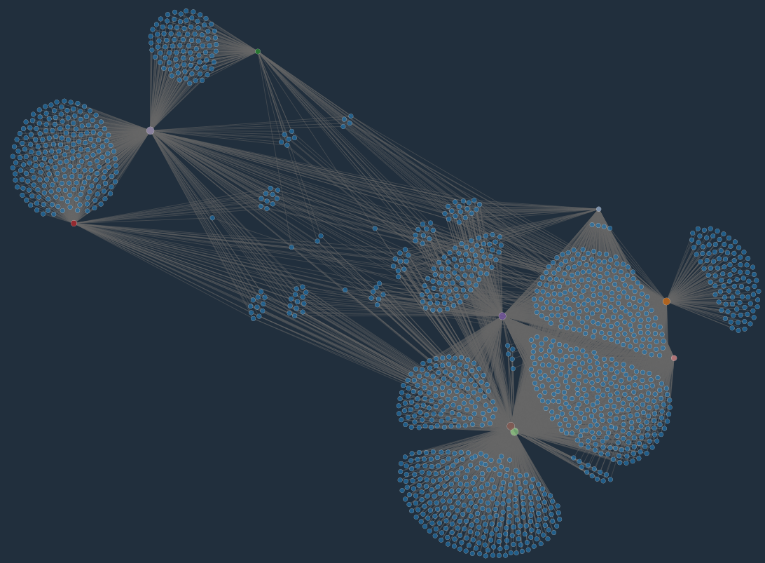
Figure 5: Sentiment network diagram about topic 1
4.1.2. Topic 2: Chinese infrastructure
In Topic 2, the comments primarily focus on China's infrastructure development and compare it with the US and India. As shown in Figure 6, the most frequently occurring positive sentiments are "positive" and "joy," each with 893 occurrences, while the most common negative sentiment is "negative" with 213 individuals. The most positive and negative sentiment accounts for 893/3848=23.2% and 213/3848=5.5% of the comments.
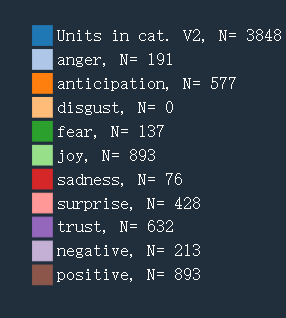
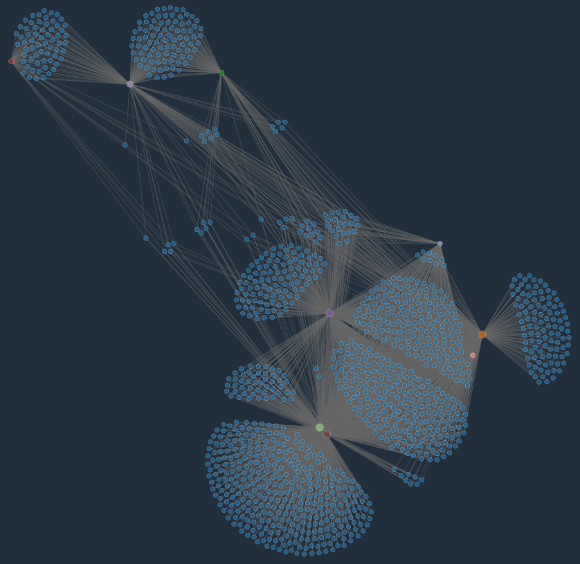
Figure 6: Sentiment network diagram about topic 2
4.2. After the visa-free policies
According to the MDCOR, the optimal number of topics was 3 (Figure 4).
4.2.1. Topic1: suspicion of the media and government
Topic 1 is filled with distrust toward the media and the government, perceiving it as propaganda. As a result, in the sentiment analysis, the three negative emotions—“disgust”, “fear”, and “negative”—each reached 408 occurrences, with negative emotions accounting for 408/3607=11.3% of the comments. While the most common positive sentiment is "positive," with 1349 individuals, the reach the proportion of 1349/3607=37.4% (Figure 7).
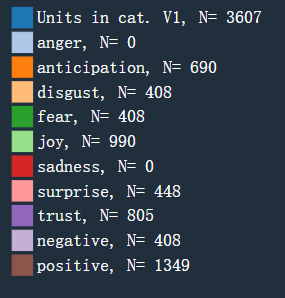

Figure 7: Sentiment network diagram about topic 1
4.2.2. Topic 2: travel experiences in China
In this topic, people share and provide their travel experiences in China, including positive comments and issues. Thus, “disgust”, “fear”, and “negative” each reached 436 instances, accounting for 436/3621=12.0% of the comments, which is the highest among all topics. On the other hand, "positive" is still the most positive sentiment, with 1280 individuals, and the ratio is 1280/3621=35.3% (Figure 8).
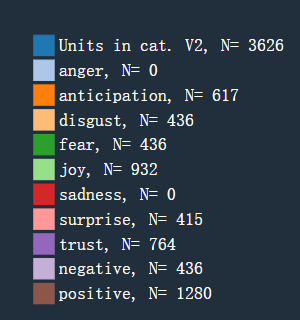
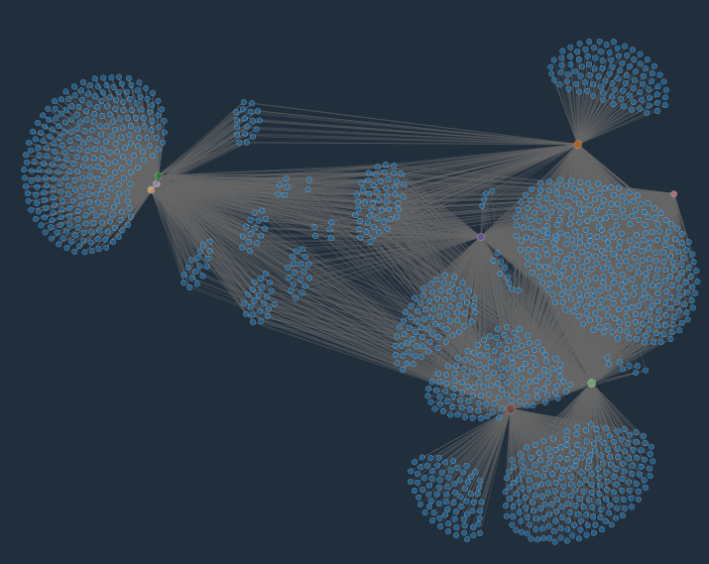
Figure 8: Sentiment network diagram about topic 2
4.2.3. Topic 3: praise for the Chinese and the scenery
The comments on this topic mainly focus on the praise of scenery and Chinese people by foreign tourists during their travels in China. This also leads to Topic 3 having the lowest proportion of negative comments since the visa-free policies, with only 297 comments expressing “disgust”, “fear”, and “negativity”. Negative sentiment accounts for 297/3515=8.4% of the comments. However, the most prevalent positive sentiment is "positive," with 1,280 occurrences, slightly less than Topic 1, accounting for 36.4% (Figure 9).
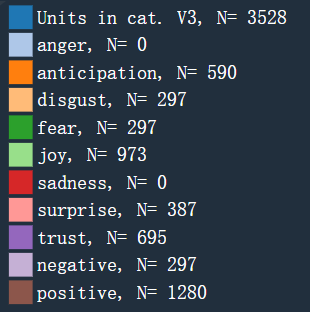

Figure 9: Sentiment network diagram about topic 3
5. Conclusion
In conclusion, through the analysis of MDCOR and SENA on video comments posted after the pandemic and before the implementation of visa-free policies, the comments primarily revolve around two topics: Racist behaviours among Chinese and Chinese infrastructure. In both topics, positive sentiments are significantly more prevalent than negative ones. The sentiments of “positive” and “joy” hold the largest shares, both around 24%, with little difference between them. However, the proportion of negative sentiments differs considerably. In the Racist behaviours among Chinese topic, negative comments account for 8.9%, whereas in the Chinese infrastructure topic, they account for only 5.5%.
With regard to RQ2, it was discovered that the video comments are classified into three distinct themes: "Suspicion of the media and government", "Travel experiences in China", and "Praise for the Chinese and the scenery". It is important to emphasize that, based on the content of the comments in the "Suspicion of the media and government" topic, this distrust is not only directed at China; the comments also include critical reflections on Western media. The comments included in the "Travel experiences in China" topic are from both Chinese citizens and foreign tourists. Therefore, they address the inconveniences of travelling in China, such as difficulties with credit cards and mobile apps, as well as various tips like recommended local food and tourist attractions by Chinese people. Through the sentiment analysis of the three topics, it can be observed that similar to the comments posted in the previous period, positive sentiments retain a dominant position, accounting for 35%-37% of the total comments, significantly higher than the proportion of negative sentiments. Nevertheless, the proportion of negative comments varies significantly across different topics, ranging from 8.4%, 11.3%, to 12.0% from lowest to highest.
The final and most crucial part is based on the indirect intergroup contact theory: has there been an improvement in people’s attitudes towards China? The comparison demonstrates that after the implementation of visa-free policies, the 20 most frequent words have transformed. The emergence of positive emotion words such as "welcome," "thank" and "love" and the disappearance of negative words like "racist" indicate that the video has enhanced the evaluation and cognition of China among the general public. Additionally, individuals are now focusing on comprehending the transformations that have occurred in China, as opposed to making comparisons with nations such as the United States and India, as they previously did. Moreover, the proportion of positive comments under the videos increased from 23%-24% to 35%-37%. This suggests that xenophobia and prejudice against Chinese people and China on social media seem to be improved, which differs from Lu and Sheng's opinions [4]. However, this does not indicate the complete disappearance of negative evaluations of China. First, through MDCOR topic analysis, it is found that negative topics about China still exist. Second, the proportion of negative emotions in the comments shows an expanding trend, increasing from 5.5% and 8.9% to 8.4%, 11.3%, and 12.0%.
This point seems to conflict with the indirect intergroup contact theory, which suggests that the more contact between different groups, the more prejudice and xenophobia will improve. This is where the group threat theory needs to be introduced [24]. When contact between different groups reaches a certain scale, it can become threatening, including both real and perceived threats [25,26]. When individuals perceive a threat, they tend to develop negative attitudes. Many studies have shown that group threat theory and intergroup contact theory could coexist [27,28]. Moreover, compared to the increase in negative comments, the rapid rise in positive comments also demonstrates that through implementing the Visa-Free Transit Policy, the positive effects of increasing contact between different groups far outweigh the perceived threats.
There are a few things that could be improved in this research. First, only English videos were selected in data collection, and only the top 5 videos with the highest views within the relevant time frame were chosen. This resulted in a smaller sample size of video comments, which can be easily influenced by the content of the videos and might cause some significant main topics and related sentiments to be unrecognized in this study. Second, there are still shortcomings in data cleaning, as some bots and unrelated comments still need to be removed, which may lead to errors in the analysis results. Finally, the loss of user demographic data such as income, social status, and race made it challenging to comprehend the content of the comments comprehensively.
References
[1]. National Bureau of Statistics of China, (2021). the Seventh National Population Census (NO.8). https://www.gov.cn/xinwen/2021-05/11/content_5605792.htm.
[2]. Ahmed, S., Chen, V.H.H., Chib, A. (2021) Xenophobia in the Time of a Pandemic: Social Media Use, Stereotypes, and Prejudice against Immigrants during the COVID-19 Crisis. International Journal of Public Opinion Research, 33(3):637–53.
[3]. Li, X., English, A.S., Kulich, S.J. (2021) Anger among Chinese Migrants amid COVID-19 Discrimination: The Role of Host News Coverage, Cultural Distance, and National Identity. PLoS ONE, 16(11):e0259866.
[4]. Lu, R., Sheng, S.Y. (2022) How Racial Animus Forms and Spreads: Evidence from the Coronavirus Pandemic. Journal of Economic Behavior & Organization, 200:82–98.
[5]. United Nations, (2023). WHO chief declares end to COVID-19 as a global health emergency. https://news.un.org/en/story/2023/05/1136367.
[6]. Ministry of Foreign Affairs of China, (2023). Foreign Ministry Spokesperson Wang Wenbin’s Regular Press Conference on March 14, 2023. https://www.fmprc.gov.cn/eng/xw/fyrbt/lxjzh/202405/t20240530_11347482.html.
[7]. National Immigration Administration of China, (2023). Visa-Free Transit Policies. https://en.nia.gov.cn/n147418/n147463/c156070/content.html.
[8]. National Immigration Administration of China, (2024). Over 141 Million Exit-Entry Travelers Recorded in China in Q1 2024. https://en.nia.gov.cn/n147413/c160791/content.html.
[9]. Global Times, (2024). China’s relaxed entry rules bring inbound tourism boom, inspire more overseas visitors to explore a real China in person. https://www.globaltimes.cn/page/202404/1311452.shtml.
[10]. Pettigrew, T.F. (1998) Intergroup Contact Theory. Annual Review of Psychology, 49:65–85.
[11]. Williams, R.M.Jr. (1947) The Reduction of Intergroup Tensions: A Survey of Research on Problems of Ethnic, Racial, and Religious Group Relations. Social Science Research Council, New York.
[12]. Allport, G.W. (1954) The Nature of Prejudice. Addison-Wesley Publishing Company, Reading, MA.
[13]. Pettigrew, T.F., Tropp, L.R. (2006) A Meta-Analytic Test of Intergroup Contact Theory. Journal of Personality and Social Psychology, 90(5):751–83.
[14]. McLaren, L.M. (2003) Anti-Immigrant Prejudice in Europe: Contact, Threat Perception, and Preferences for the Exclusion of Migrants. Social Forces, 81(3):909–36.
[15]. Dovidio, J.F., Eller, A., Hewstone, M. (2011) Improving Intergroup Relations through Direct, Extended and Other Forms of Indirect Contact. Group Processes & Intergroup Relations, 14(2):147–60.
[16]. Amichai-Hamburger, Y., McKenna, K.Y.A. (2006) The Contact Hypothesis Reconsidered: Interacting via the Internet. Journal of Computer-Mediated Communication, 11(3):825–43.
[17]. White, F.A., Harvey, L.J., Abu-Rayya, H. (2015) Improving Intergroup Relations in the Internet Age: A Critical Review. Review of General Psychology, 19(2):129–39.
[18]. Nagayoshi, K. (2016) Research on xenophobia in Japan: What are the remained tasks for the future research. The annual reports of Graduate School of Arts and Letters, Tohoku University, 66:164–143.
[19]. Ahmed, S., Jaidka, k., Chen, V.H.H., Cai, M., Chen, A., Emes, C.S., Yu, V., Chib, A. (2024) Social Media and Anti-Immigrant Prejudice: A Multi-Method Analysis of the Role of Social Media Use, Threat Perceptions, and Cognitive Ability. Frontiers in Psychology, 15:1280366.
[20]. Theocharis, Y., Barberá, P., Fazekas, Z., Popa, S.A., Parnet, O. (2016) A bad workman blames his tweets: the consequences of citizens' uncivil twitter use when interacting with party candidates. Journal of Communications, 66(6): 1007–1031.
[21]. Oz, M., Zheng, P., Chen, G.M. (2018) Twitter versus Facebook: comparing incivility, impoliteness, and deliberative attributes. New Media & Society, 20(9): 3400–3419.
[22]. Thelwall, M. (2018) Social Media Analytics for YouTube Comments: Potential and Limitations. International Journal of Social Research Methodology, 21(3):303–16.
[23]. González Canché, M.S. (2023) Machine Driven Classification of Open-Ended Responses (MDCOR): An Analytic Framework and No-Code, Free Software Application to Classify Longitudinal and Cross-Sectional Text Responses in Survey and Social Media Research. Expert Systems with Applications, 215:119265.
[24]. Blumer, H. (1958) Race Prejudice as a Sense of Group Position. Pacific Sociological Review, 1(1):3–7.
[25]. Haubert, J., Fussell, E. (2006) Explaining pro-immigrant sentiment in the U.S.: Social class, cosmopolitanism, and perceptions of immigrants. International Migration Review, 40(3): 489–507.
[26]. Escandell, X., Ceobanu, A.M. (2009) When contact with immigrants matters: Threat, interethnic attitudes and foreigner exclusionism in Spain’s comunidades autónomas. Ethnic and Racial Studies, 32(1): 44–69.
[27]. Schlueter, E., Scheepers, P. (2010) The relationship between outgroup size and anti-outgroup attitudes: A theoretical synthesis and empirical test of group threat- and Intergroup Contact theory. Social Science Research, 39(2): 285–295.
[28]. Cea D’Ancona, M.Á. (2018) What determines the rejection of immigrants through an integrative model. Social Science Research, 74: 1–15.
Cite this article
Liu,Z. (2025). The Role of Social Media in Prejudice—Public Attitudes Towards China under the Visa-Free Transit Policy. Communications in Humanities Research,68,8-17.
Data availability
The datasets used and/or analyzed during the current study will be available from the authors upon reasonable request.
Disclaimer/Publisher's Note
The statements, opinions and data contained in all publications are solely those of the individual author(s) and contributor(s) and not of EWA Publishing and/or the editor(s). EWA Publishing and/or the editor(s) disclaim responsibility for any injury to people or property resulting from any ideas, methods, instructions or products referred to in the content.
About volume
Volume title: Proceedings of 3rd International Conference on Interdisciplinary Humanities and Communication Studies
© 2024 by the author(s). Licensee EWA Publishing, Oxford, UK. This article is an open access article distributed under the terms and
conditions of the Creative Commons Attribution (CC BY) license. Authors who
publish this series agree to the following terms:
1. Authors retain copyright and grant the series right of first publication with the work simultaneously licensed under a Creative Commons
Attribution License that allows others to share the work with an acknowledgment of the work's authorship and initial publication in this
series.
2. Authors are able to enter into separate, additional contractual arrangements for the non-exclusive distribution of the series's published
version of the work (e.g., post it to an institutional repository or publish it in a book), with an acknowledgment of its initial
publication in this series.
3. Authors are permitted and encouraged to post their work online (e.g., in institutional repositories or on their website) prior to and
during the submission process, as it can lead to productive exchanges, as well as earlier and greater citation of published work (See
Open access policy for details).
References
[1]. National Bureau of Statistics of China, (2021). the Seventh National Population Census (NO.8). https://www.gov.cn/xinwen/2021-05/11/content_5605792.htm.
[2]. Ahmed, S., Chen, V.H.H., Chib, A. (2021) Xenophobia in the Time of a Pandemic: Social Media Use, Stereotypes, and Prejudice against Immigrants during the COVID-19 Crisis. International Journal of Public Opinion Research, 33(3):637–53.
[3]. Li, X., English, A.S., Kulich, S.J. (2021) Anger among Chinese Migrants amid COVID-19 Discrimination: The Role of Host News Coverage, Cultural Distance, and National Identity. PLoS ONE, 16(11):e0259866.
[4]. Lu, R., Sheng, S.Y. (2022) How Racial Animus Forms and Spreads: Evidence from the Coronavirus Pandemic. Journal of Economic Behavior & Organization, 200:82–98.
[5]. United Nations, (2023). WHO chief declares end to COVID-19 as a global health emergency. https://news.un.org/en/story/2023/05/1136367.
[6]. Ministry of Foreign Affairs of China, (2023). Foreign Ministry Spokesperson Wang Wenbin’s Regular Press Conference on March 14, 2023. https://www.fmprc.gov.cn/eng/xw/fyrbt/lxjzh/202405/t20240530_11347482.html.
[7]. National Immigration Administration of China, (2023). Visa-Free Transit Policies. https://en.nia.gov.cn/n147418/n147463/c156070/content.html.
[8]. National Immigration Administration of China, (2024). Over 141 Million Exit-Entry Travelers Recorded in China in Q1 2024. https://en.nia.gov.cn/n147413/c160791/content.html.
[9]. Global Times, (2024). China’s relaxed entry rules bring inbound tourism boom, inspire more overseas visitors to explore a real China in person. https://www.globaltimes.cn/page/202404/1311452.shtml.
[10]. Pettigrew, T.F. (1998) Intergroup Contact Theory. Annual Review of Psychology, 49:65–85.
[11]. Williams, R.M.Jr. (1947) The Reduction of Intergroup Tensions: A Survey of Research on Problems of Ethnic, Racial, and Religious Group Relations. Social Science Research Council, New York.
[12]. Allport, G.W. (1954) The Nature of Prejudice. Addison-Wesley Publishing Company, Reading, MA.
[13]. Pettigrew, T.F., Tropp, L.R. (2006) A Meta-Analytic Test of Intergroup Contact Theory. Journal of Personality and Social Psychology, 90(5):751–83.
[14]. McLaren, L.M. (2003) Anti-Immigrant Prejudice in Europe: Contact, Threat Perception, and Preferences for the Exclusion of Migrants. Social Forces, 81(3):909–36.
[15]. Dovidio, J.F., Eller, A., Hewstone, M. (2011) Improving Intergroup Relations through Direct, Extended and Other Forms of Indirect Contact. Group Processes & Intergroup Relations, 14(2):147–60.
[16]. Amichai-Hamburger, Y., McKenna, K.Y.A. (2006) The Contact Hypothesis Reconsidered: Interacting via the Internet. Journal of Computer-Mediated Communication, 11(3):825–43.
[17]. White, F.A., Harvey, L.J., Abu-Rayya, H. (2015) Improving Intergroup Relations in the Internet Age: A Critical Review. Review of General Psychology, 19(2):129–39.
[18]. Nagayoshi, K. (2016) Research on xenophobia in Japan: What are the remained tasks for the future research. The annual reports of Graduate School of Arts and Letters, Tohoku University, 66:164–143.
[19]. Ahmed, S., Jaidka, k., Chen, V.H.H., Cai, M., Chen, A., Emes, C.S., Yu, V., Chib, A. (2024) Social Media and Anti-Immigrant Prejudice: A Multi-Method Analysis of the Role of Social Media Use, Threat Perceptions, and Cognitive Ability. Frontiers in Psychology, 15:1280366.
[20]. Theocharis, Y., Barberá, P., Fazekas, Z., Popa, S.A., Parnet, O. (2016) A bad workman blames his tweets: the consequences of citizens' uncivil twitter use when interacting with party candidates. Journal of Communications, 66(6): 1007–1031.
[21]. Oz, M., Zheng, P., Chen, G.M. (2018) Twitter versus Facebook: comparing incivility, impoliteness, and deliberative attributes. New Media & Society, 20(9): 3400–3419.
[22]. Thelwall, M. (2018) Social Media Analytics for YouTube Comments: Potential and Limitations. International Journal of Social Research Methodology, 21(3):303–16.
[23]. González Canché, M.S. (2023) Machine Driven Classification of Open-Ended Responses (MDCOR): An Analytic Framework and No-Code, Free Software Application to Classify Longitudinal and Cross-Sectional Text Responses in Survey and Social Media Research. Expert Systems with Applications, 215:119265.
[24]. Blumer, H. (1958) Race Prejudice as a Sense of Group Position. Pacific Sociological Review, 1(1):3–7.
[25]. Haubert, J., Fussell, E. (2006) Explaining pro-immigrant sentiment in the U.S.: Social class, cosmopolitanism, and perceptions of immigrants. International Migration Review, 40(3): 489–507.
[26]. Escandell, X., Ceobanu, A.M. (2009) When contact with immigrants matters: Threat, interethnic attitudes and foreigner exclusionism in Spain’s comunidades autónomas. Ethnic and Racial Studies, 32(1): 44–69.
[27]. Schlueter, E., Scheepers, P. (2010) The relationship between outgroup size and anti-outgroup attitudes: A theoretical synthesis and empirical test of group threat- and Intergroup Contact theory. Social Science Research, 39(2): 285–295.
[28]. Cea D’Ancona, M.Á. (2018) What determines the rejection of immigrants through an integrative model. Social Science Research, 74: 1–15.





